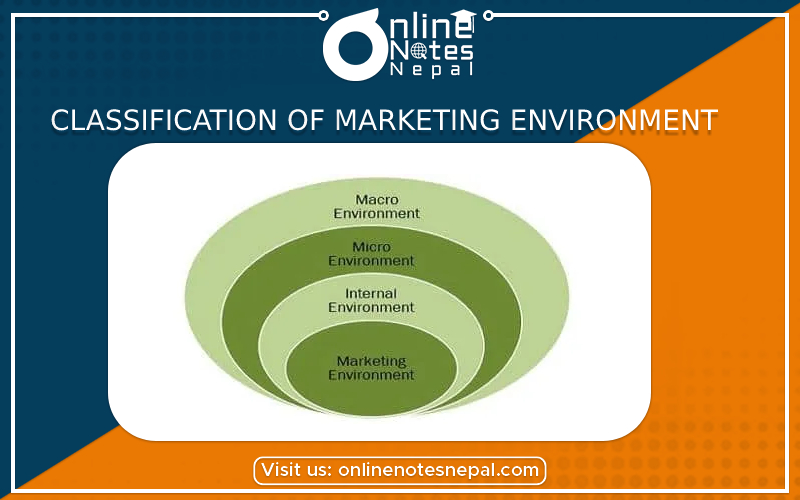Published by: Mandira
Published date: 03 Feb 2022

Marketing environment in general can be classified into two halves:
Internal marketing environment refers to the collection of factors within the firms itself. In other words, they are the environmental components within the firms. Internal environment includes those forces, which can be controlled of manipulated by the management whenever required.
The major components of internal environment are as follows:
An external environment consists of environmental factors that are outside the firm. An external environment consists of micro and macro environment. Both of these micro and macro environments are uncontrollable in nature and have considerable effect on any marketing system.
Micro Environment and its Variables
Micro environment refers to all the factors close to the organization that affects its ability to serve its customers. It is also called as task environment and includes the main players in the market. The major micro environment variables are explained as follows:
Customer: They are the real market for the products and services. Their personal characteristics such as buying habit, spending pattern, standard of living, educational background, cultural and religious value, attitude and personality, perception, etc, affect the organizations. Customer of firms target market classified into four major categories.
Product Suppliers: Product suppliers consists of individual or organizations regularly supplying the products to the marketing organization for reproduction or release purpose. The success of marketing organization depends upon the regular supply of goods and services by the suppliers.
Marketing Intermediaries: Marketing intermediaries are independent business organizations that help the flow of goods and services form the producing point to the consumption point.
Competitors: Such is the nature of the business; no company stands alone for the purpose of satisfying the customer needs. It faces competition. Competitions are those entities who serve the same group od customer.
Macro Environment and its Variables
Macro environment refers to all the external and uncontrollable forces that influence an organization. They are the forces that shape opportunities and pose threat to the organization. The major variables of macro environment are explained below:
Economic Environment: Economic environment is a signification macro environment variable that affects both the marketing firms and customer. The economic environment consists of factors that affects consumer’s purchasing power. The major trends of the economy are as follows:
Demographic Environment: Demographic represents the statistical study of human population and its distribution characteristics. It is an important task for marketing executives to study about the changing pattern of the demography in the country, since the population is the primary target market of the marketing organization. There are two major aspects of demography they are as follows:
Socio-culture Environment: A society is a group of people having distinct beliefs, knowledge, costumes, habits, taste, value, culture, life-style, etc. A successful market I one who can adjust its product to the changing socio-cultural environment. Therefore, marketer must be able to make a detail study and analysis of following sociocultural variable:
Technological Environment: One of the major macro environments that have changed the entire dynamics of marketing activities is the technological environment.it is the primary force that is redefining out destiny. It changes rapidly and creates an array of the marketing opportunities.
Political and legal Environment: The political and legal environment is a broad term covering the firms and institutions by which the nation is governed. It consists of an interacting set of laws, government agencies and pressure groups that influence and constrain the conduct of various organizations and individuals in the society.
Natural Environment: Natural environment refers to the totality of the natural resources that are essential as input for marketers or are affected by marketing activities. Resources are not distributed by nature in all the countries in the same ratio.
Competitive Environment: Competitive environment is another major macro environment variable. With competitive now an unavoidable aspects for every form of business, it is important to understand the various aspects of competitive environment.